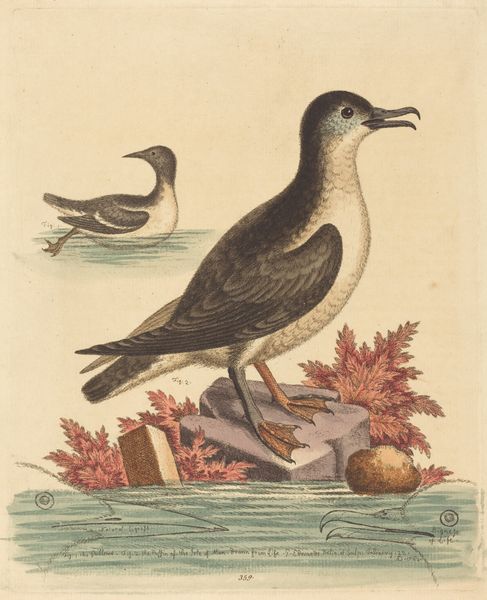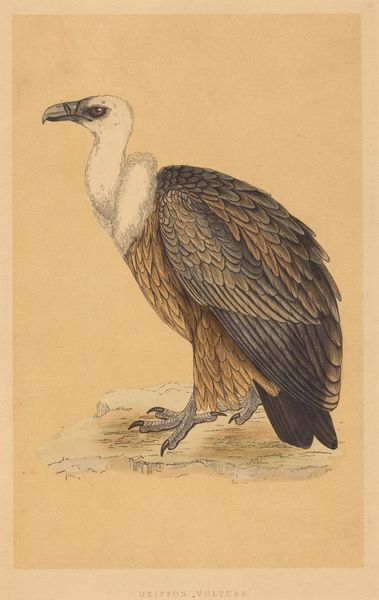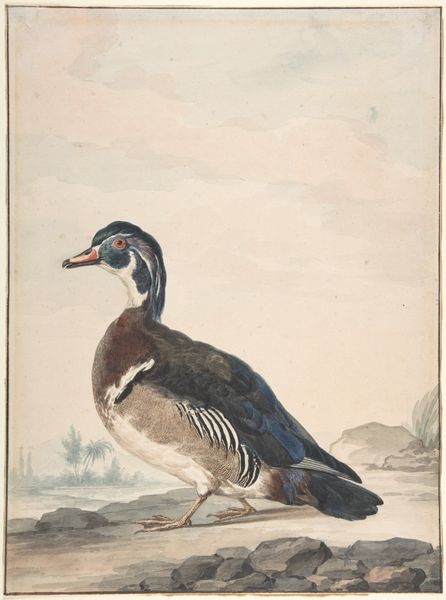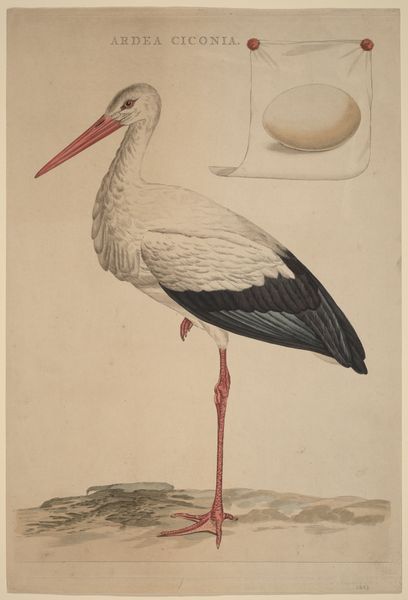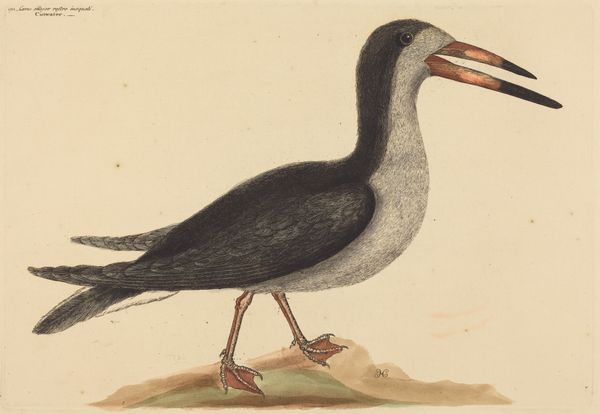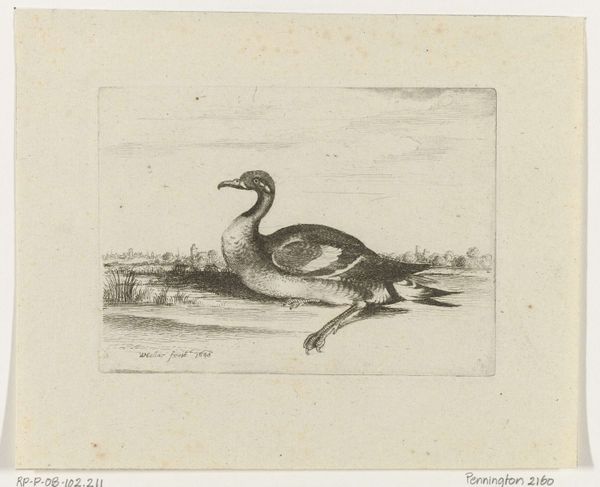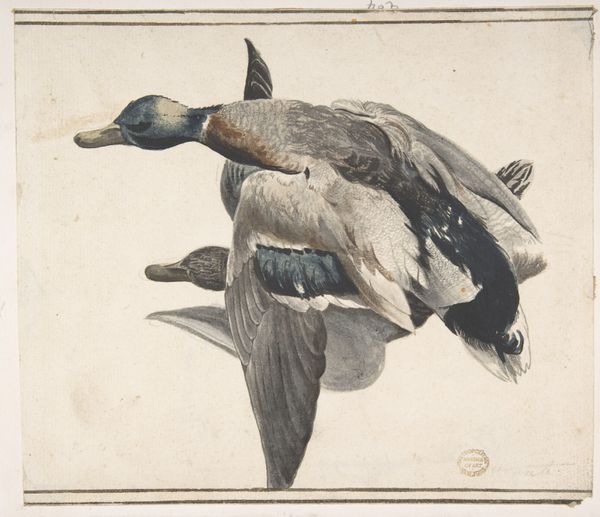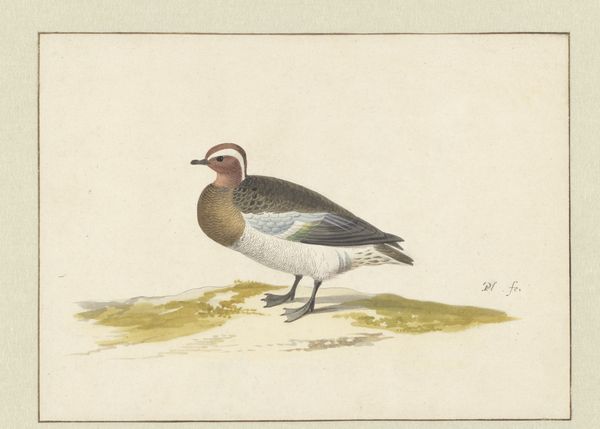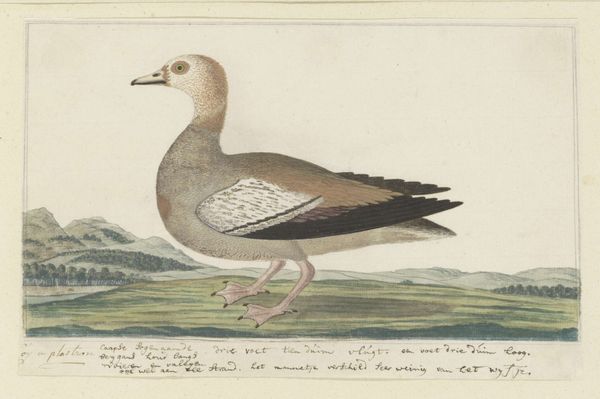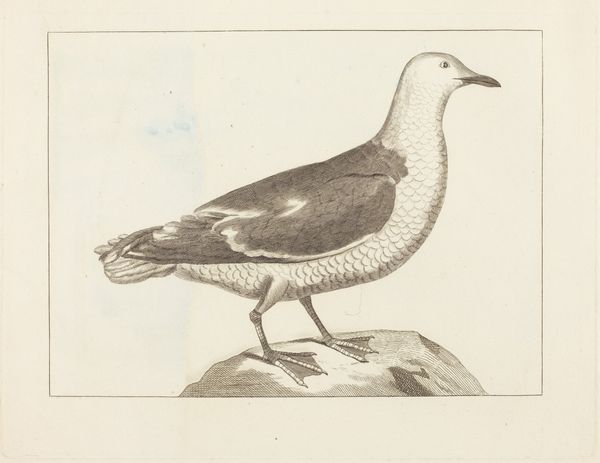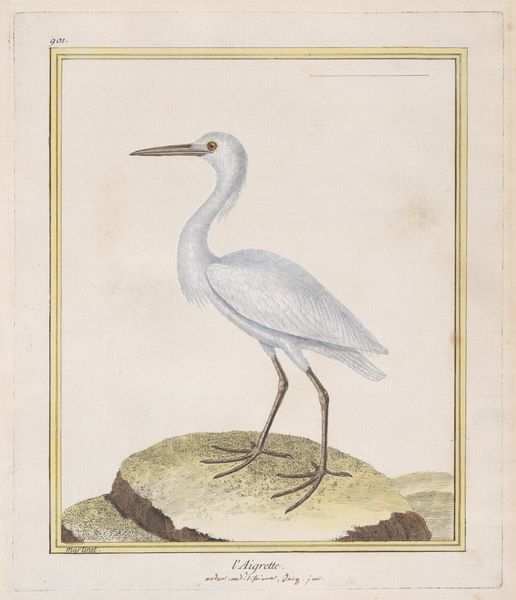
drawing, gouache, watercolor, chalk
#
drawing
#
netherlandish
#
gouache
#
landscape
#
watercolor
#
chalk
#
watercolour illustration
#
northern-renaissance
#
watercolor
#
realism
Copyright: Public Domain
Curator: Let’s turn our attention to this fascinating work: *Haubenente mit wei\u00dfer Brust, schwarzem Schnabel, F\u00fc\u00dfen und Fl\u00fcgeln* by Aert Schouman, currently held at the St\u00e4del Museum. The artist employed watercolor, gouache and chalk in this depiction of a crested duck. Editor: Well, hello there, distinguished fowl! It strikes me as incredibly dignified, almost like it's posing for its portrait. There’s something endearingly old-fashioned about it too. Curator: Precisely! This piece presents a captivating glimpse into the detailed study of natural history prevalent during Schouman’s era. The intersection of scientific observation and artistic practice is key here; such illustrations were often commissioned or created for scientific publications. Notice how the media contributes to the work, and ask: who was consuming such art? What purposes did it serve? Editor: I can almost feel the artist meticulously layering each shade. Gouache gives it such a rich texture, while the chalk adds those delicate shadows and details, like around the bird's eyes. It looks very intentional, which for me shifts it away from clinical study into artful interpretation of it. I also wonder what context informed Schouman's decision to pick *this* duck, of all the other glorious avians. Was this duck locally and economically significant? Curator: Possibly. Considerations for paintings like these have to extend beyond its aesthetic or even illustrative purpose: where would the materials used for these come from? The gouache would need pigment and binding agent, perhaps with the pigment itself needing to be imported from elsewhere. And someone, perhaps the artist themselves, needs to be extracting these resources. This work asks questions regarding natural resource access. Editor: That’s a powerful point, making the materials active participants. I’m just caught up in its elegant simplicity. The off-white space focuses me entirely on the duck's presence and reminds me of an actor on an empty stage. Its beady eyes feel both judgmental and knowing...like it holds a secret to the performance of the planet. Curator: Considering Schouman's cultural context and possible patrons for such a work definitely brings new layers of nuance to such ideas. Ultimately, the artwork acts as a rich historical document and piece of creative output, and to understand it, both those readings must coincide. Editor: Indeed. A duck, yes, but also so much more.
Comments
No comments
Be the first to comment and join the conversation on the ultimate creative platform.
